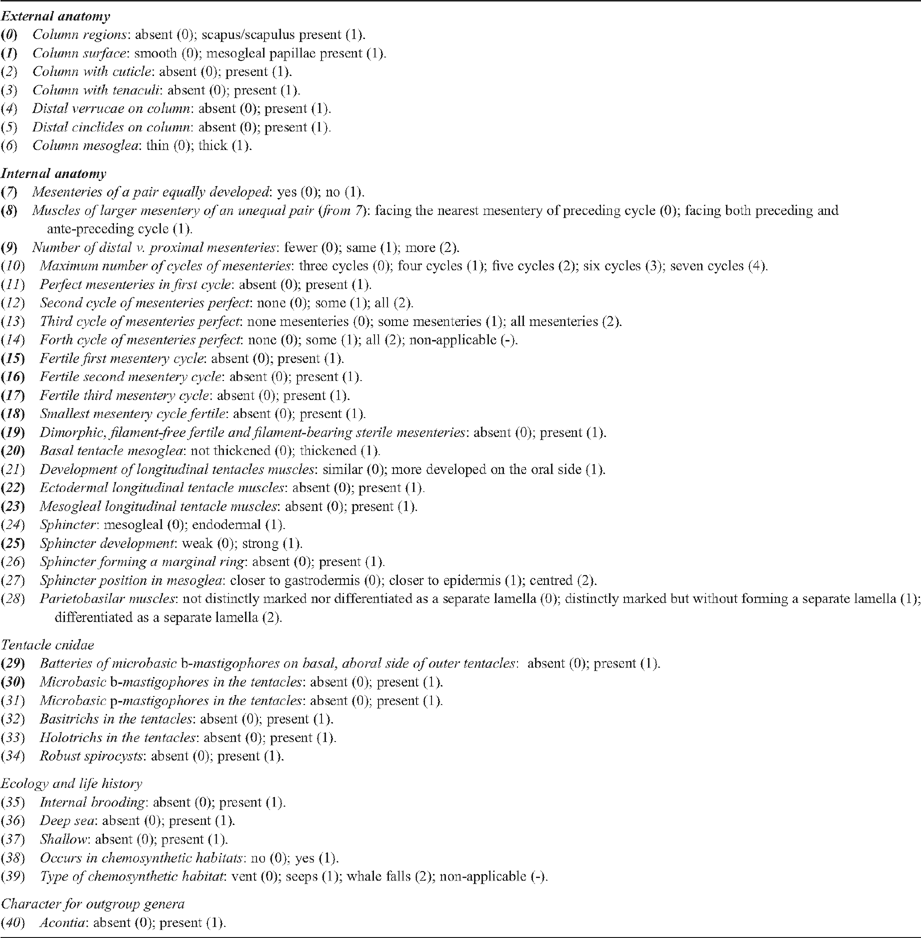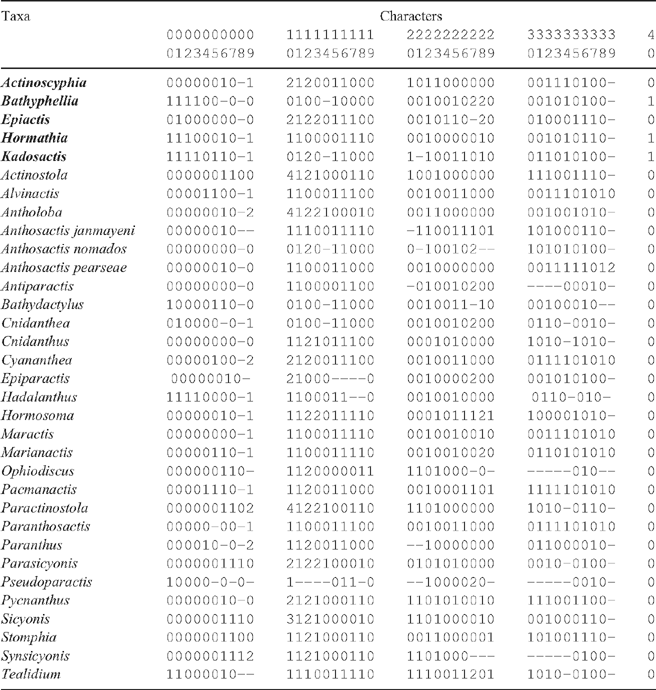Morphological phylogeny of the family Actinostolidae (Anthozoa : Actiniaria) with description of a new genus and species of hydrothermal vent sea anemone redefining the family Actinoscyphiidae
Estefanía Rodríguez A B , Christopher N. Castorani A and Marymegan Daly AA Department of Evolution, Ecology and Organismal Biology, Ohio State University, Columbus, OH 43212, USA.
B Corresponding author. Email: fani@us.es
Invertebrate Systematics 22(4) 439-452 https://doi.org/10.1071/IS07053
Submitted: 23 October 2007 Accepted: 29 April 2008 Published: 14 October 2008
Abstract
We describe a new genus and species of hydrothermal vent sea anemone from the eastern north Pacific Ocean. The combination of characters in Alvinactis reu, gen. et sp. nov. is unique among currently known genera of the actiniarian superfamily Mesomyaria; most notable among its external features is a belt of verrucae and cinclides in the distal column. We assess the placement of Alvinactis, gen. nov. and evaluate taxonomic features used to distinguish groups within Actinostolidae Carlgren, 1893 and Actinoscyphiidae Stephenson, 1920 with a cladistic analysis of morphological characters. Phylogenetic analysis reveals that Alvinactis, gen. nov. and several genera previously ascribed to Actinostolidae belong in Actinoscyphiidae. Morphological evidence fails to support monophyly of Actinostolidae, but does support monophyly of the previously proposed subfamily Actinostolinae.
Additional keywords: Actinoscyphiidae, Cnidaria, deep-sea diversity, hydrothermal vents, Pacific Ocean.
Acknowledgements
Specimens were collected by Janet Voight, with the assistance of the scientific party of cruise AT 11–03, the crew of the R/V Atlantis and the crew of the DSV Atlantis. J. Gerber of the FMNH helped in the accession and loan of the specimens. Collection of specimens was funded through NSF DEB-0072695 to J. Voight; their description was funded through NSF EF-0531763 to MD and a OSU CBS Dean’s Undergraduate Research award to CNC. J. Voight of the FMNH, S. Cairns of the USNM, R. Van Syoc of the CAS, and O. Tendal of the ZMUC provided comparative material. J. Wenzel gave advice on coding characters and identifying networks within the tree. A. Reft is thanked for her helpful advice and comments on cnidae.
Bremer K.
(1994) Branch support and tree stability. Cladistics 10, 295–304.
| Crossref |
[Accessed 18 December 2007].
Fautin D. G., Barber B. R.
(1999) Maractis rimicarivora, a new genus and species of sea anemone (Cnidaria: Anthozoa: Actiniaria: Actinostolidae) from an Atlantic hydrothermal vent. Proceedings of the Biological Society of Washington 112, 624–631.
[Accessed 20 October 2007].
Gosse P. H.
(1859) Characters and descriptions of some new British sea anemones. Annals and Magazine of Natural History 3(13), 46–50.
[Accessed 20 October 2007].
Östman C.
(2000) A guideline to nematocyst nomenclature and classification, and some note on the systematic value of nematocysts. Scientia Marina 64(1), 31–46.
key to the actinostolid genera. Characters that do not manifest exclusive states in all members of a taxon have been broken into several binary characters (e.g. #s 22 and 23) rather than coded as single multistate characters. Characters applicable only to outgroup taxa indicated


|


